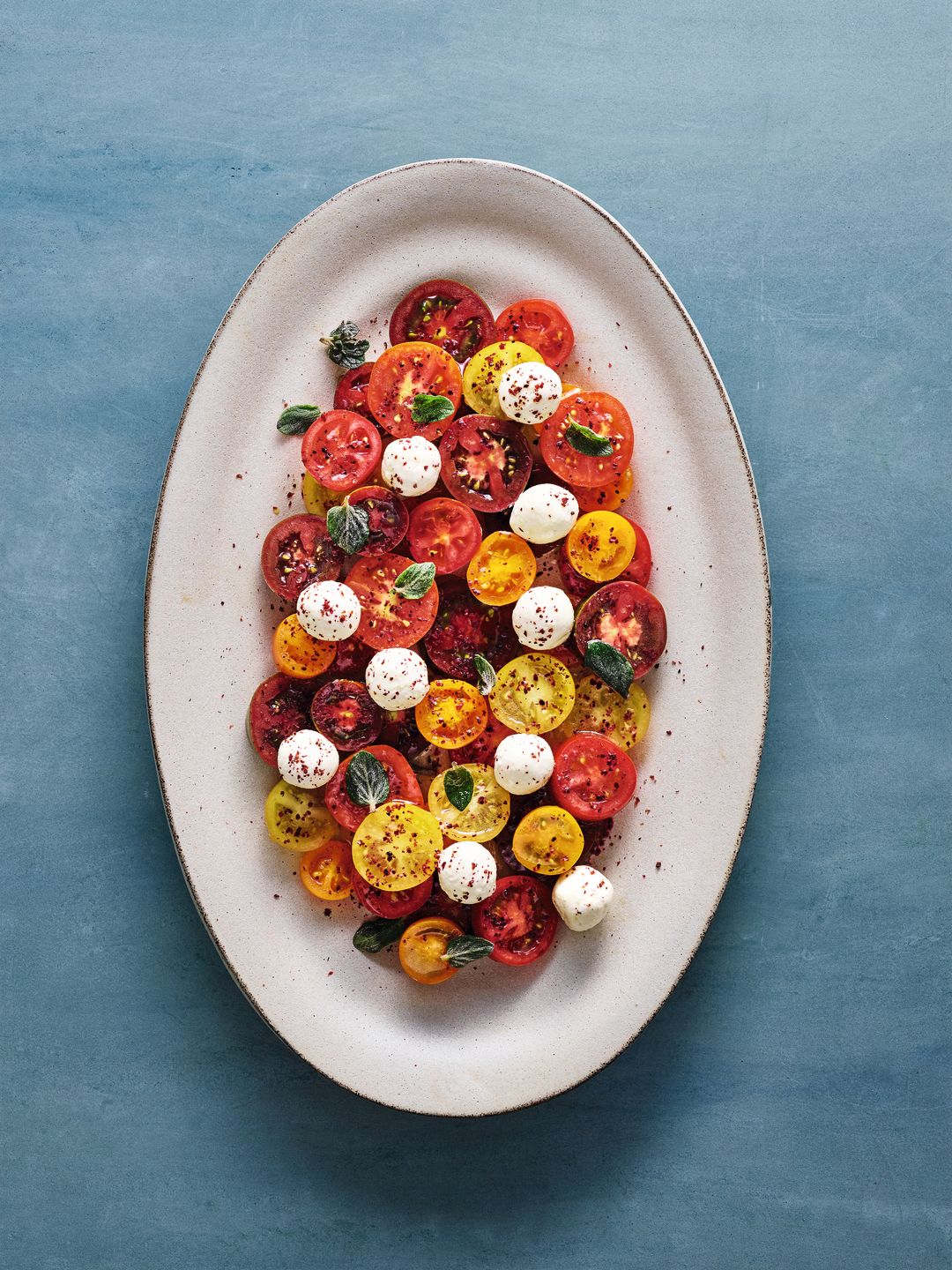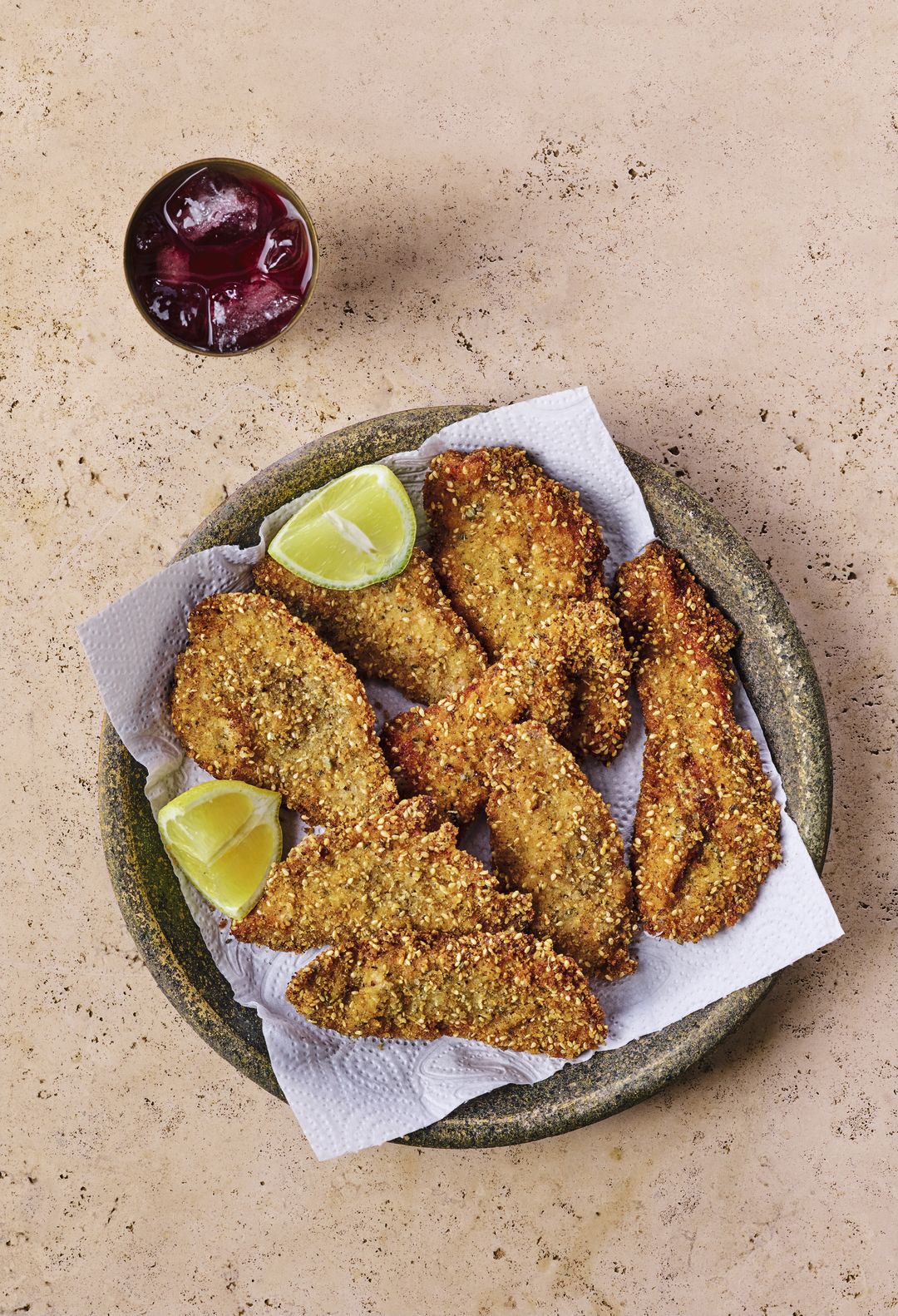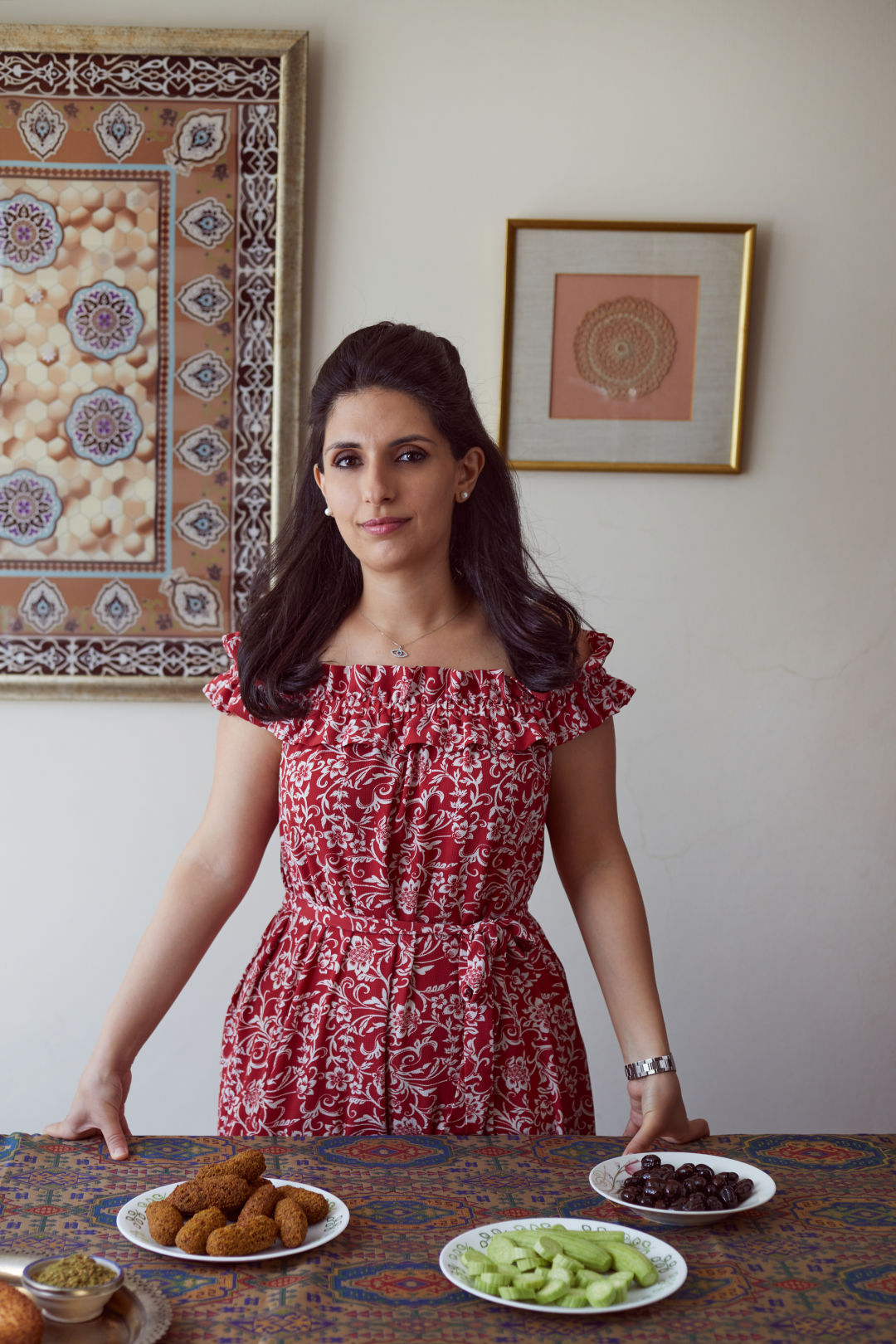New Cookbook Offers Flavorful Recipes From Across the Arab World

Tomato salad with labaneh and za'atar.
Image: Dan Perez
I love any cookbook that gives me an excuse to expand my already overflowing spice shelf. So when I first got my hands on The Arabesque Table, the new cookbook from Reem Kassis, out next week, I was ecstatic.
I immediately set about hunting down new flavors, some of them easier to find than others. I stocked up on sumac, mace, nigella seeds, mahlab, fenugreek and za'atar, which I learned from the book isn't just a popular spice blend, but a whole herb all its own, similar to oregano when it's fresh.
Kassis, in fact, organizes the cookbook around ingredients, dividing it into sections that highlight adjacent flavors like pomegranates and lemons; za'atar and sumac; and coriander, cumin and cardamom.
The eggplants and tomatoes section, for example, contains a light tomato salad dressed with spheres of homemade labaneh (a creamy cheese-like ingredient made by mixing salt into yogurt and allowing it to drain for hours), garlic, lemon, sumac, salt and both fresh za'atar and a za'atar blend. The same section also includes a recipe for eggplant-wrapped kafta rolls in tomato sauce, a rich baked dish that highlights the deeper, muted flavor of slow-cooked tomatoes. The contrast gives you perspective on the way the same ingredients can be used in different ways.

Za'atar schnitzel.
Image: Dan Perez
Most of the recipes are easy to follow and many are vegetarian. Even the section that covers what Kassis calls "basics" is eye-opening.
To make a briny white cheese, for example, you stir vinegar into simmering milk until it separates, then flavor the curds with nigella seeds, mahlab and mastic. (I couldn't find mastic locally, but was able to substitute a similar product I obtained during a visit to Oman three years ago.) I didn't nail the texture (mine was looser than Kassis'), but the flavor is unlike any other cheese I've eaten—tangy and floral, and wonderful on its own or spread across a cracker.
Through the rest of the book, you'll find instructions on how to make salads, crackers, cakes, desserts, dumplings and chicken, lamb, fish and beef meals.

Reem Kassis.
Image: Dan Perez
Born and raised in Jerusalem, Kassis has lived in London and now makes her home in Philadelphia. Her 2017 cookbook The Palestinian Table won raves for highlighting the cooking of her grandmother and mother, as well as other Palestinian dishes.
In the introduction to The Arabesque Table, Kassis calls inviting someone to eat in your home "a very intimate act, an expression of love."

The cover of Reem Kassis' The Arabesque Table: Contemporary Recipes From the Arab World.
Image: Courtesy Photo
"You are welcoming them into your life and sharing with them not only a meal, but the history and stories the meal holds," she writes. "That was exactly what I attempted to do with my first book, The Palestinian Table. In it, I wove a very personal narrative of my family's recipes and stories through which I invited others to explore the history of Palestinian cuisine and the often-overlooked narrative of its people."
To write The Arabesque Table, Kassis broadened the story, incorporating recipes from across the Arab world. She chose the title for the way it evokes the "intertwined flowing lines" and "intersecting and everchanging patterns" of arabesque designs.
"No cuisine is a straight line stretching infinitely back in time," she writes. "Rather, it is just like an arabesque pattern, flowing and intertwined, its beauty not intrinsic but enriched by the kaleidoscope of interlaced and potentially infinite designs that inspired this title."



